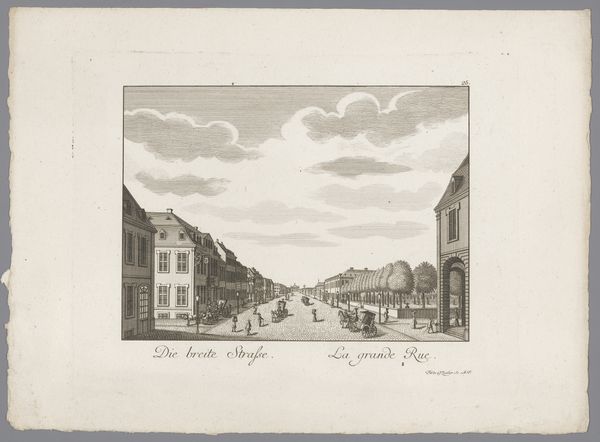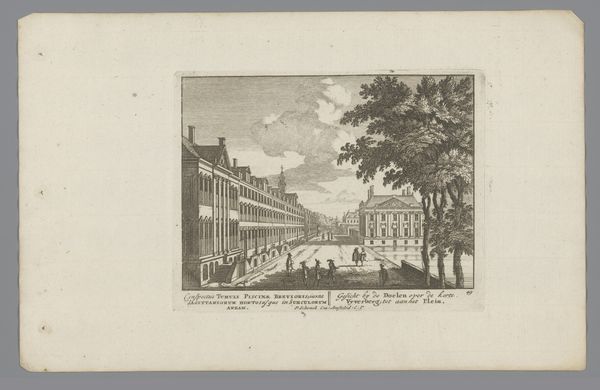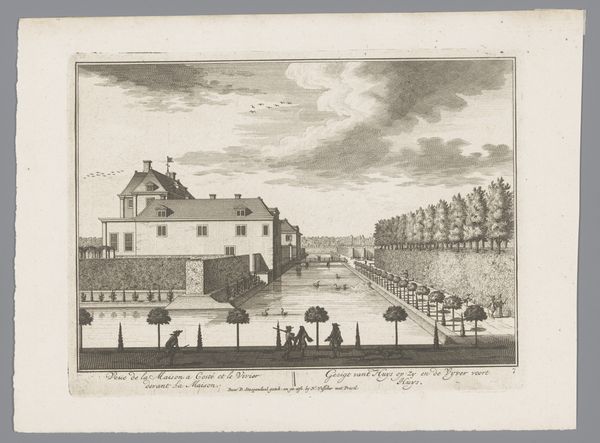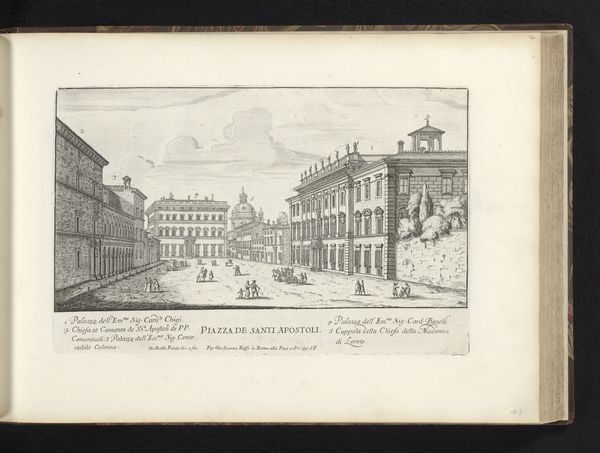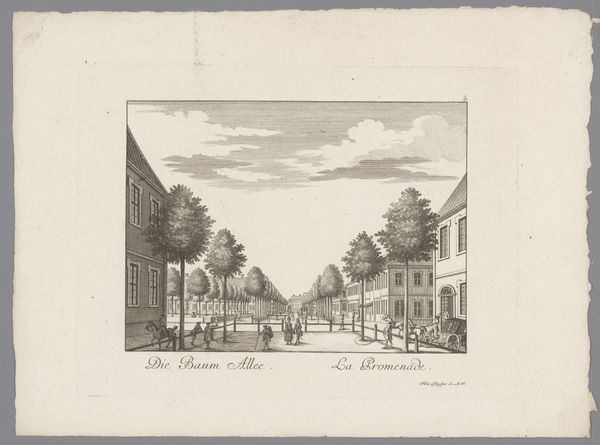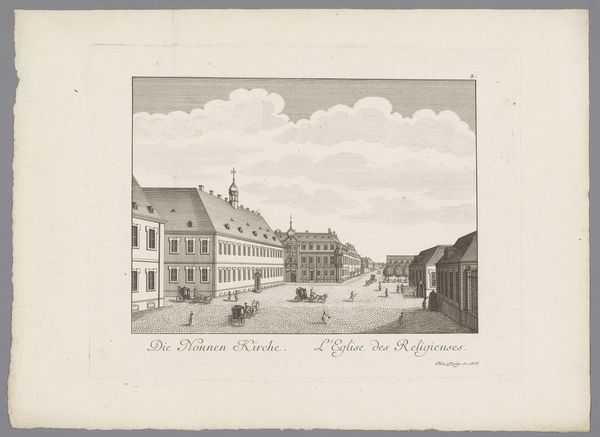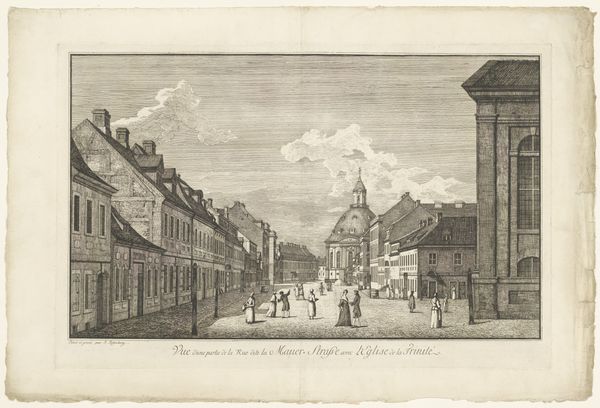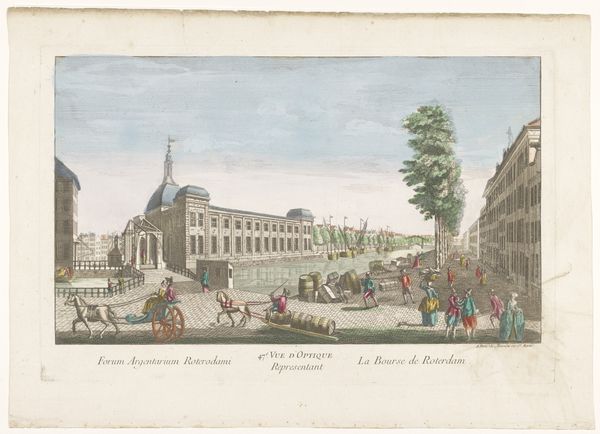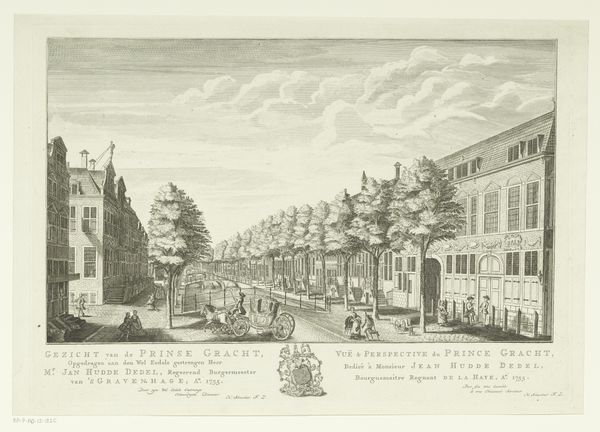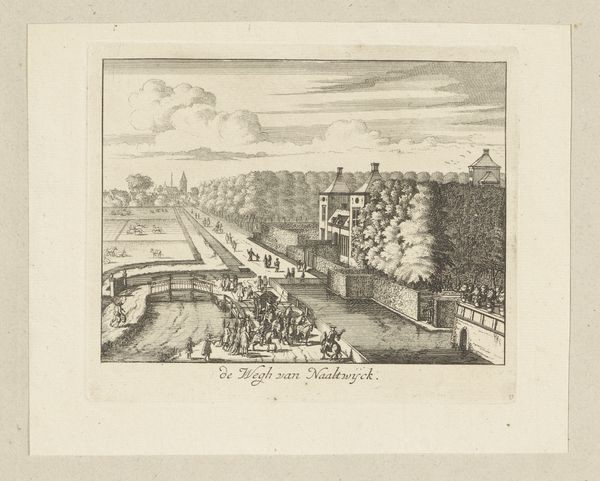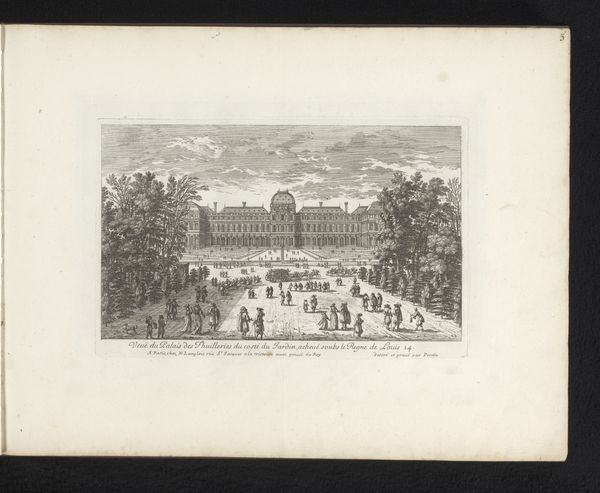
Dimensions: height 213 mm, width 280 mm
Copyright: Rijks Museum: Open Domain
Editor: We’re looking at "Gezicht op de oude kazerne, te Mannheim," or "View of the old barracks in Mannheim," a 1782 engraving by the Klauber brothers, currently held at the Rijksmuseum. It's fascinating to see the cityscape, but also feels strangely...staged? What strikes you most about this piece? Curator: I am immediately drawn to the institutional and social power structures visualized here. This isn't simply a depiction of a cityscape; it's a carefully constructed representation of authority and order. Notice how the barracks buildings frame the marching soldiers, emphasizing the presence and control of the military within the city. Editor: Yes, the barracks look almost like a backdrop. How does this presentation relate to the role of art during this era? Curator: Precisely! This era, even while seemingly rooted in rationalism, used images to solidify social hierarchies and political dominance. The rigid lines and symmetrical composition reinforce an image of control and stability. Think about who would commission such a work. Was it for the officers themselves? To impress visiting dignitaries? Or to circulate as a print to the public? Editor: That makes sense. Seeing it as a tool for shaping public perception sheds a new light on the image. So the very act of depicting it so rigidly… Curator: Serves to reinforce that control. Consider also, what is absent? Everyday civilian life is relegated to the margins. It silently projects a political message by what is shown and how, but even more potently, by what is omitted. Editor: I never thought of it that way. Now, analyzing the visual elements, understanding their original purpose, gives it new life. Thanks! Curator: Absolutely. Context transforms our perception of an artwork and deepens the experience, it becomes something far beyond what appears at first glance.
Comments
No comments
Be the first to comment and join the conversation on the ultimate creative platform.

